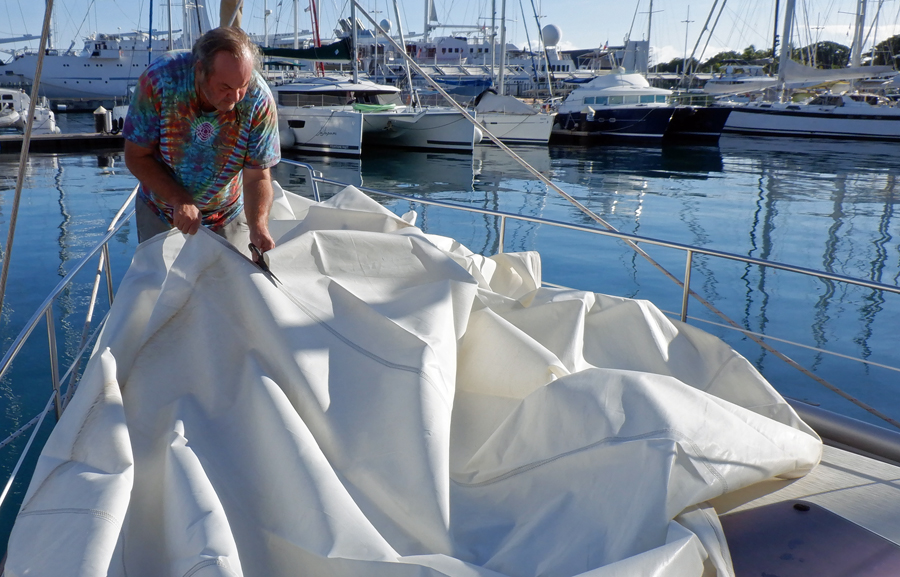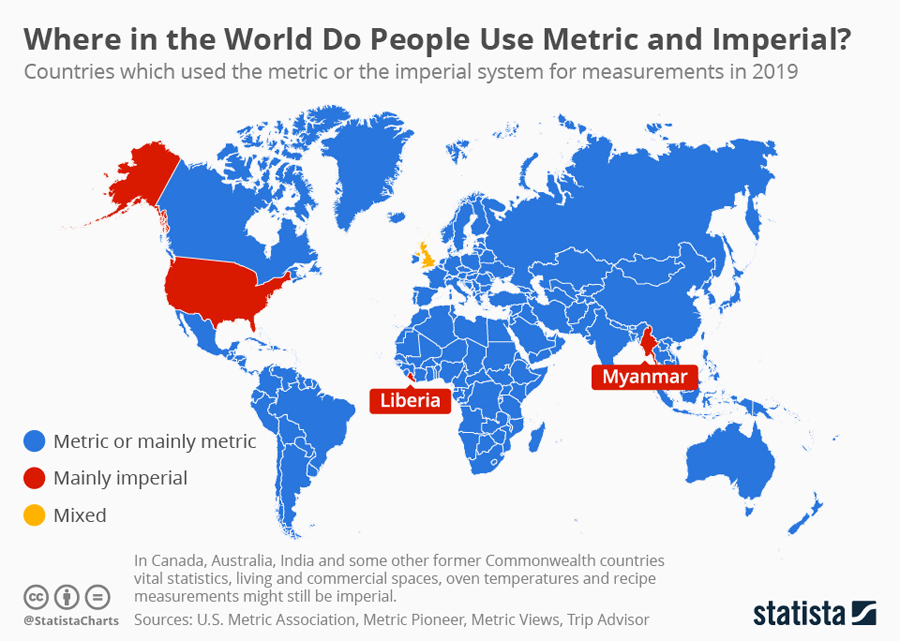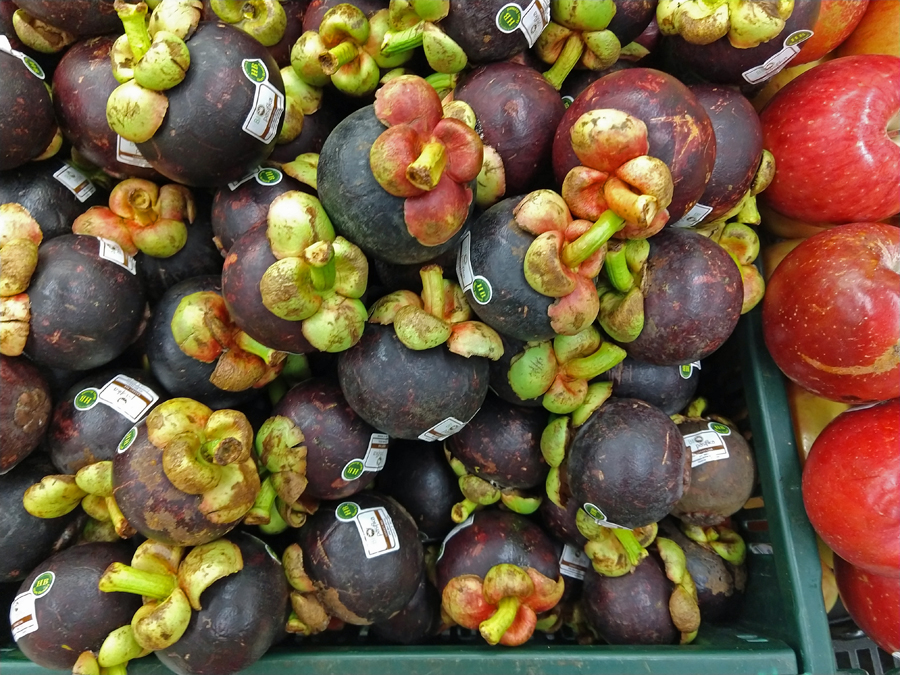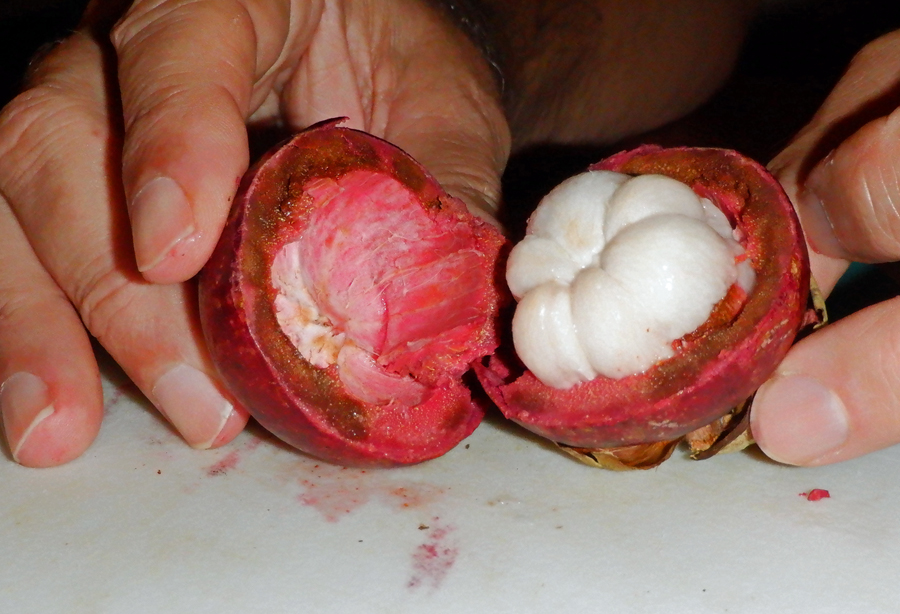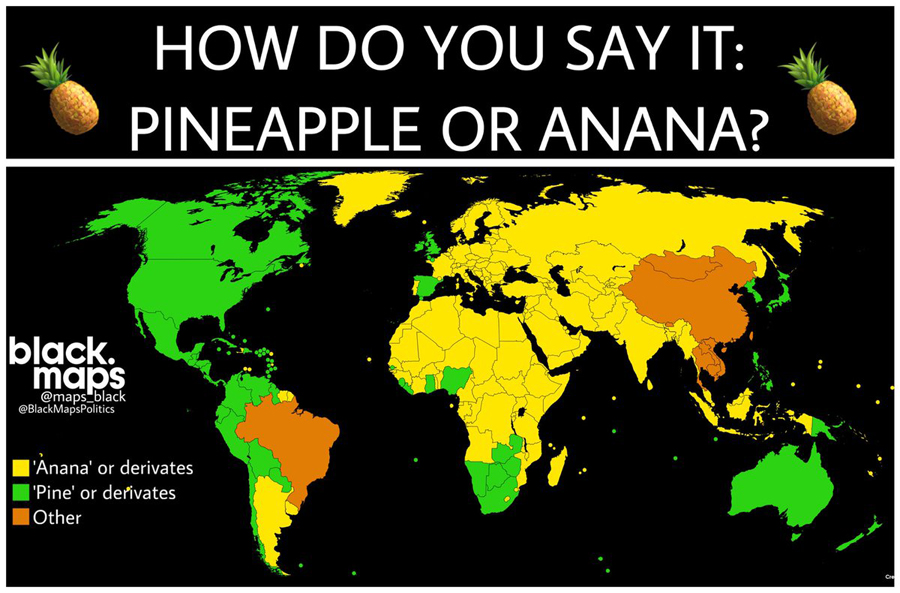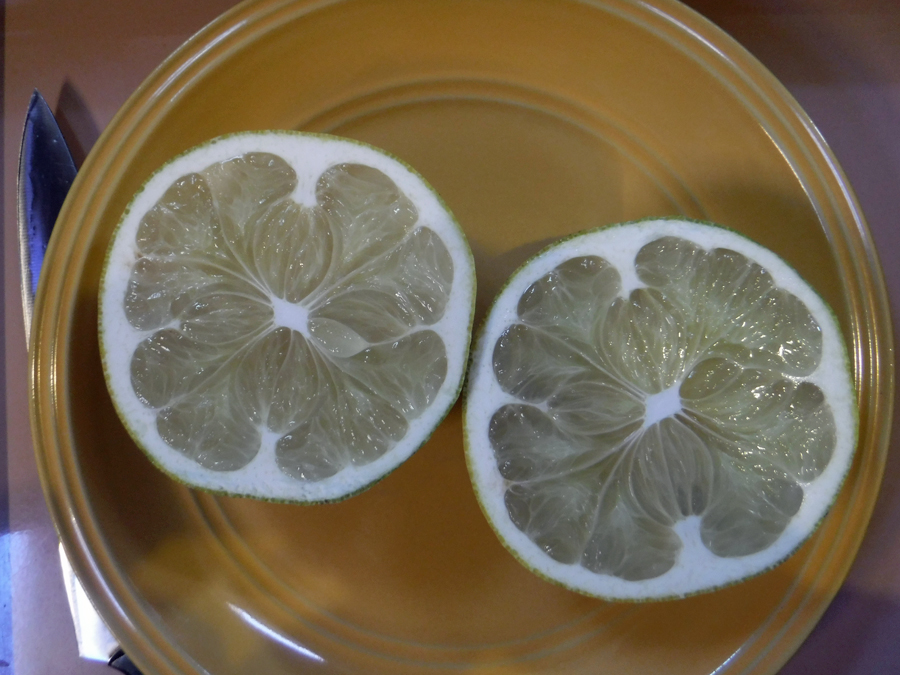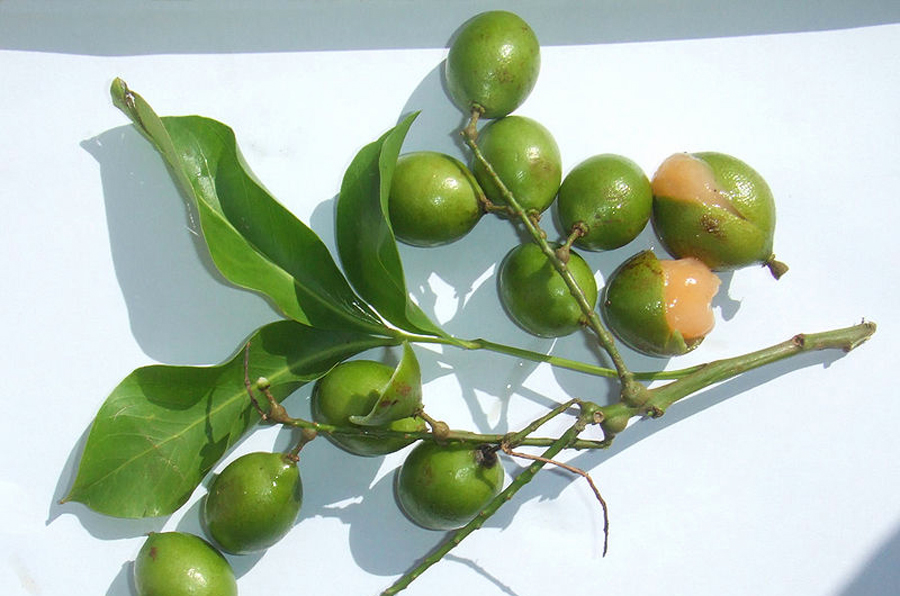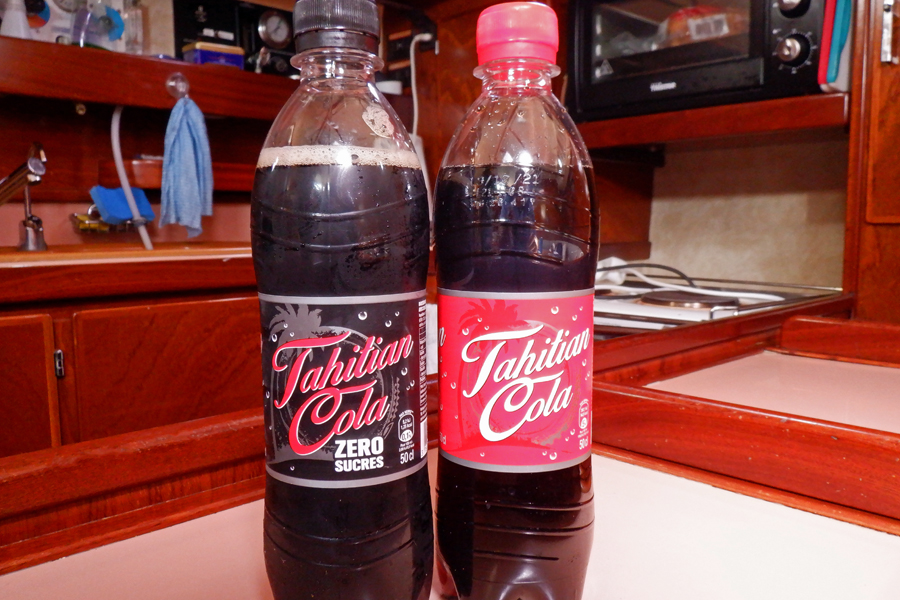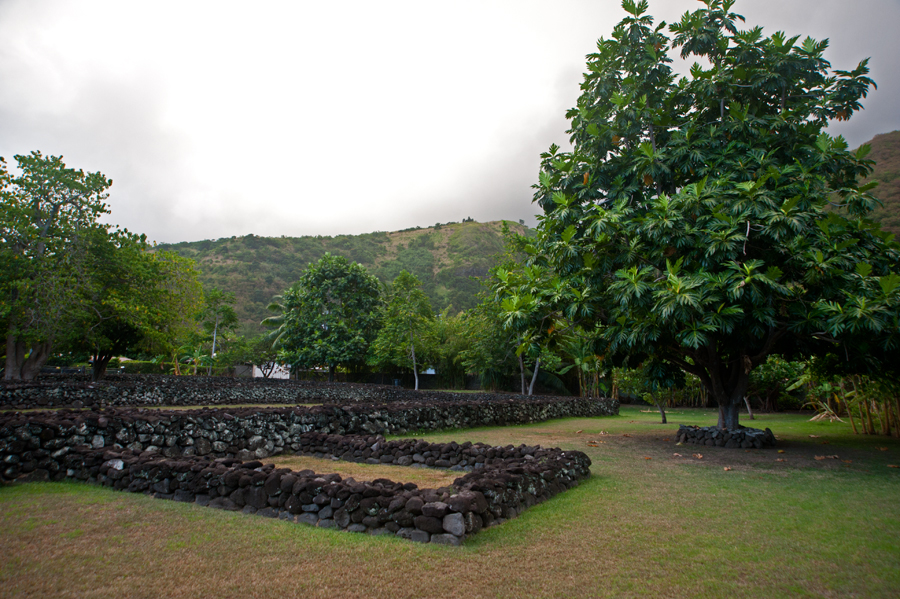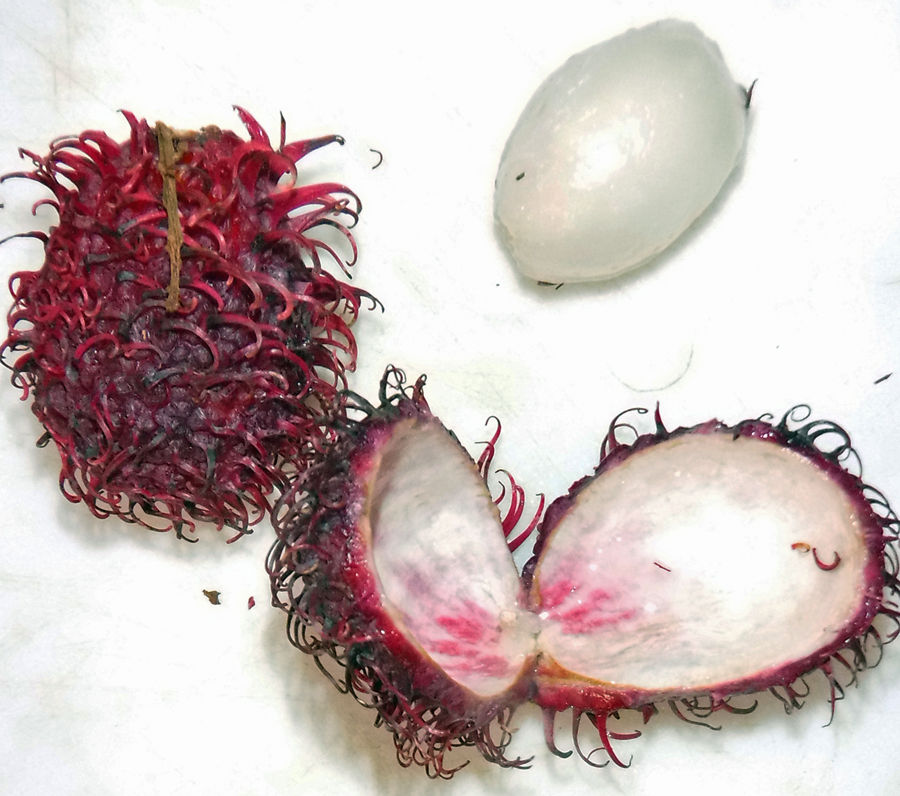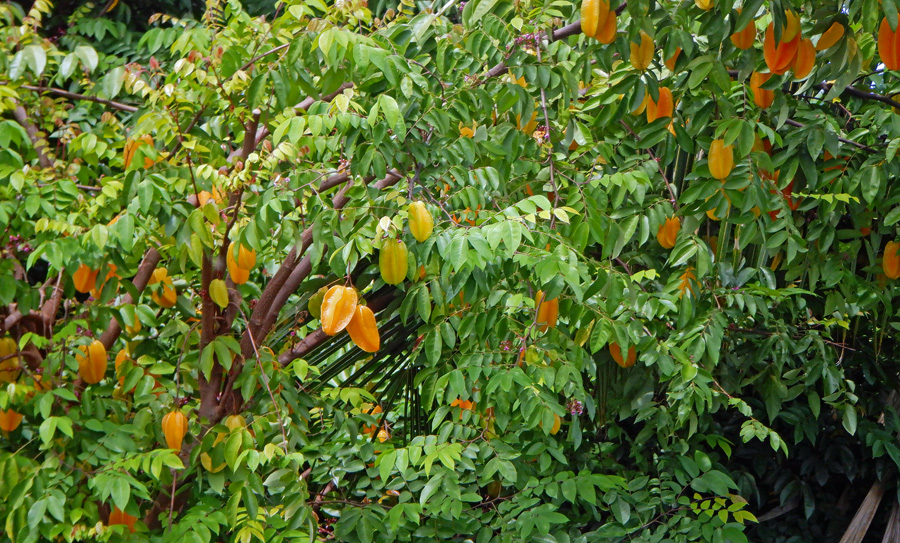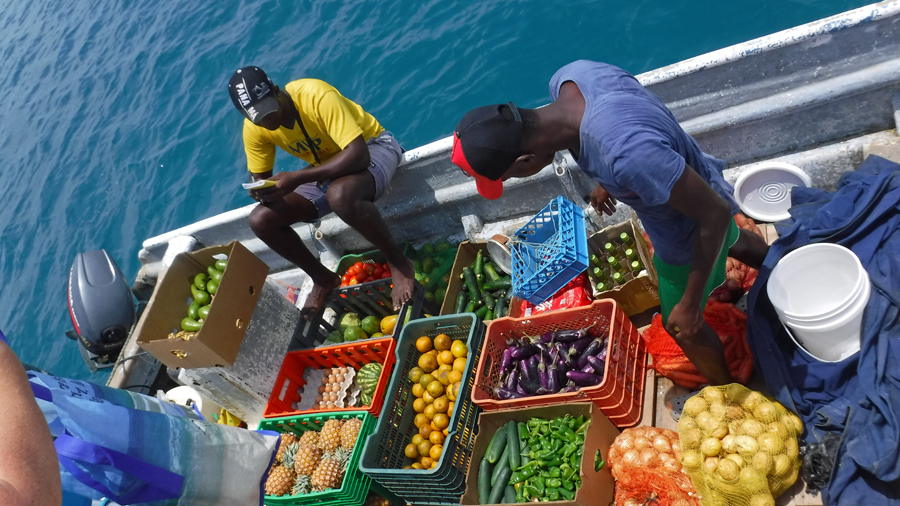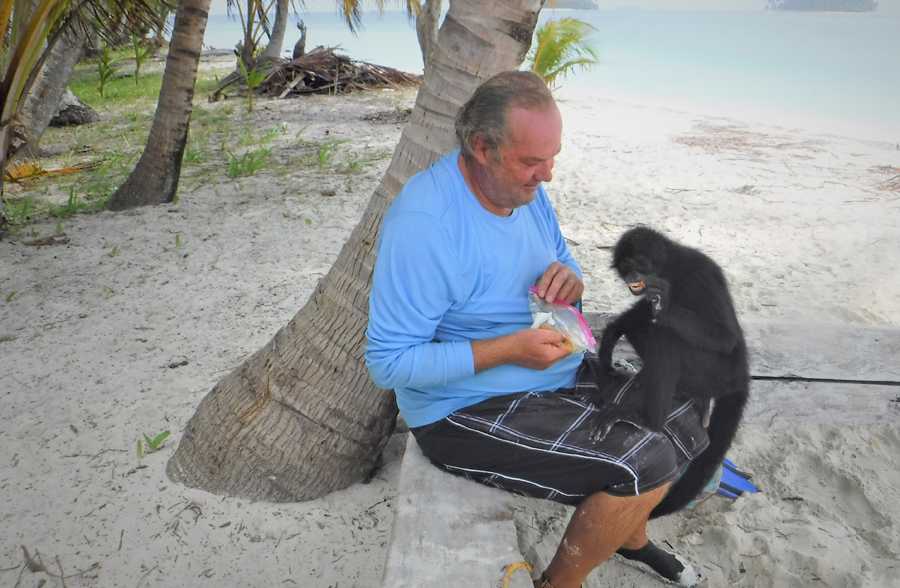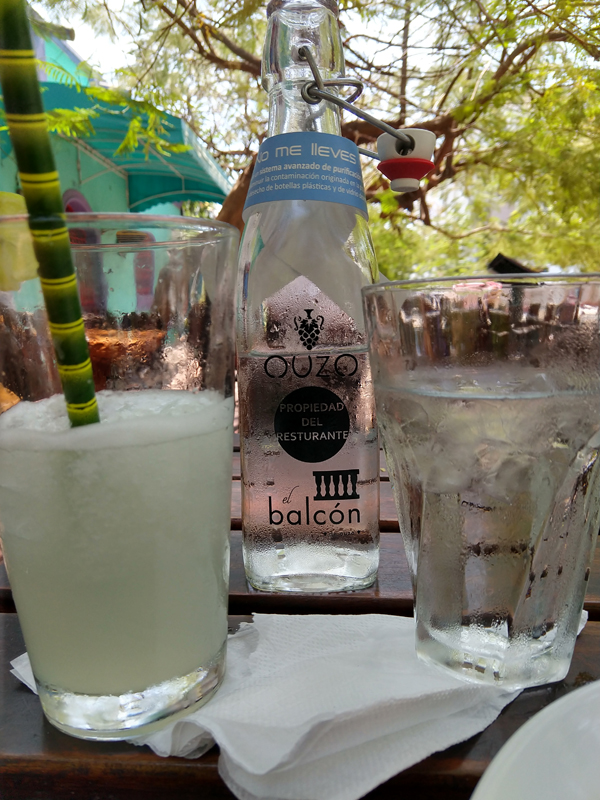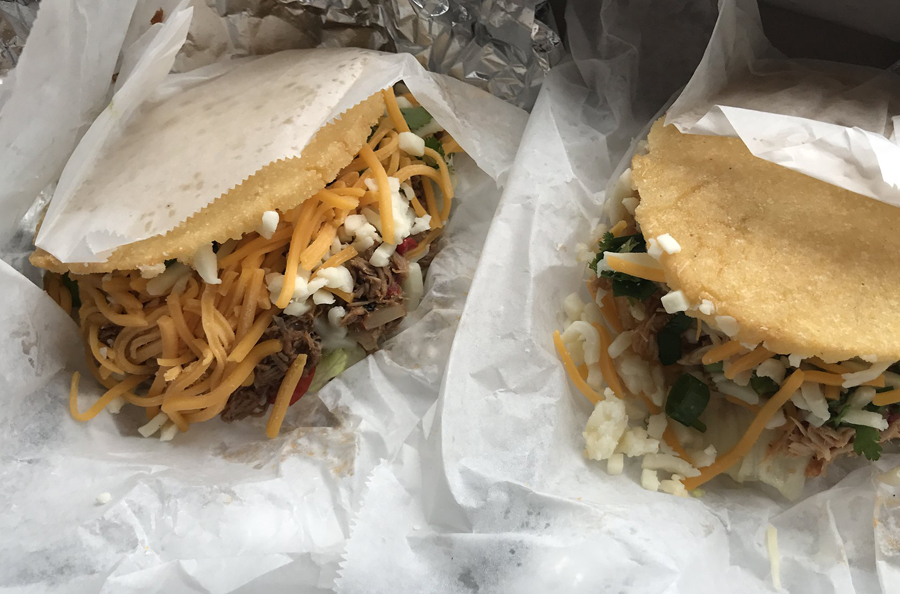Sails
Sometimes in life, we have to do things going completely against the grain. Cutting up our old sails was one of these things. It pained me we can’t recycle or donate them. The customs laws of French Polynesia do not allow it.
We ordered a full set of sails for Cream Puff last year and swapped them out. The old sails sat folded on the top of the forward cabin. When we ordered the sails, they shipped to us from Turkey and arrived in French Polynesia duty-free. As a yacht in transit, we are allowed to import items for the boat duty-free (we pay an agent to facilitate this service). But, because the old sails arrived on the boat which hasn’t been imported (the boat is allowed to stay for three years before importation is required – recently changed to 2 years but we are grandfathered to the 3-year term) The parts coming off the boat can’t be sold or donated unless import fees are paid. If asked, we must prove to customs the old sails are leaving with us or were destroyed. We sign paperwork stating we will abide by the law as we receive our duty-free goods. Anything we receive duty-free must depart with us.
Some cruisers tend to take these customs laws lightly and place old boat parts for sale in FaceBook groups. In French Polynesia, there are no income taxes. The base of this government’s tax comes from import fees. So, they take this very seriously. It would be just our luck if we didn’t follow the laws and upon exiting the country had an inspection by customs asking about thousands of dollars of sails and questions of the whereabouts.
We cut some large squares from the sails to be used as drop cloths in the boatyard, table clothes for messy work, and we have plans to make a few tote bags. This took care of the mainsail. The genoa sail is about twice the size of the main. That one went to the dumpster with pictures documenting the demise of a sail. The same sail that has caught the wind to propel Cream Puff for tens of thousands of miles across oceans. I would much rather donate it to a kid’s sailing school or a charity looking for a huge chunk of fabric. After almost a year of trying to figure out an alternative to destroying these and a few emails to customs asking for alternatives, we finally gave up.
Toilet Paper
Today I had an epiphany. Yes, another one. Do you realize the world has somehow managed to standardize the width of a roll of toilet paper? How did this happen? After all, there is no world toilet paper consortium or WTPC. I even Googled it to be sure. But yet, in every country we’ve visited and purchased toilet paper, the rolls fit our holders. It is never too wide or too fat. Was there a secret meeting or a sidebar during a summit of our nation’s leaders? I find it quite remarkable the world has agreed on the size of a TP roll but has yet to sort itself out on metric or imperial measures. These are the sorts of questions going through my brain as I wonder about the streets of Pape’ete.
ATMs
I stopped by the Post Office ATM to get some cash. I like the Post Office machines because they don’t charge fees. The banks do charge but the French Post offices have always provided fee-free ATMs. The ATM didn’t want to give me any money. Perhaps it is out of money. This happens sometimes at the PO machines because they are the most popular. I tried another PO ATM located just down the street. It also decided against parting with some cash. Perhaps the internet is down, I thought. This happens sometimes on islands we visit. It’s not often but it does happen. At the third ATM, a bank machine, I received the same message. Then, it dawned on me: Perhaps I should check the account balance. Funny how that works.
Directions
I went to the doctor recently and got a script for an entire year of medication I take. The doctor visit was US$32.00 and the pills were US$105 for a grand total of US$137. This is about 1/5th of the price I paid in the USA with insurance. Here, this price is without using insurance. I am only writing this as a reminder to Americans who read this blog how much they are overcharged. Don’t worry, no rant to follow. The reason I mentioned this is because the doctor told me he is moving his office to a facility with a little more space (he speaks perfect English).
When I asked the doctor about his new location, he said it was near the old colonial hospital. I gave him a look that obviously portrayed I have no earthly idea where that is. He turned his computer around and show me the location on Google Maps. Now, I know what you are thinking. You are thinking why didn’t he just give me the new address. It doesn’t work like this here in French Polynesia.
To begin with, most of the streets do not have street signs. If they do have a name, it is often not posted anywhere. If you ask a Tahitian for directions, they tend to point in the general directions and tell you the closest landmark. Or, they will describe the building to you. If you are really close, they will just show you where it is. There aren’t really any addresses.
We were recently told by one of Cindy’s Tahitian lady friends, that most people living on Tahiti have no idea of the street names. It is just not a concept they are familiar with. They just know where everything is located. If you asked for the location of Chez Rosa restaurant, you will be told it is near Maxi’s. And, everyone knows where Maxi’s is located. It’s just down the street from the Olympian Sporting Goods store. Don’t believe me? Look on Google Maps at the addresses of some businesses. There are no street numbers. If you’re lucky the location on Google is close enough to find it. Once Cindy’s friend explained this, pieces fell into place. Like the time we were shopping for an electrical fitting.
I needed a part for the new VHF radio cable I was installing. We went to the only shop we knew of in downtown Pape’ete for two reasons. First, the owner speaks English. And second, he has an odd assortment of parts thus making us hopeful. He looked at the fitting and shook his head. He suggested another store which was unfamiliar to us. We asked for directions. What happened next has puzzled me, until recently.
He walked out of the store with us and proceeded to walk about two blocks inland telling us to follow him. Oh good, I thought, it must be nearby. Ha! I was wrong. Once we got to a crossroads, he pointed us in the right direction, told us to walk until the road ends, then cross it (it made sense when we got there), and then he returned to his now unoccupied store. We thanked him and walked and walked and walked eventually striking gold. We found the store and they had the part. So now you see what I mean. Most places would tell you to go to 5th Street, turn left and walk until you get to 1st Ave. Not here.
So, how does the mail get delivered? There is no mail delivery on the French Polynesian islands. Everyone has a post office box at the post office and picks up the mail. There is really no need for street names and numbers. You might ask yourself now if you really need mail delivered to your house. This makes me unsure if the Polynesians are behind other countries or ahead of them.
Food
Now to what I really wanted to talk about when I started this post before getting so very sidetracked on the previous topics: One of the great perks of this lifestyle is we get to try new things. On a recent visit to the local market, we noticed these funny little things in the fruit section. Being cats who haven’t felt the wrath of curiosity yet, we decided to buy a couple. As we checked out, our cashier conversed in English. If people speak English here, we discovered they love to practice with us. We asked her what it was we were purchasing. She told us they are Mangoustans. She also said they are delicious and we’ll be back for more once we have tried them.
So back at the Puffster, how the heck do we eat these things? Once again we reach out to our alma mater, The University of YouTube. I watch a short video (in French) and the chef took a huge cooking knife and cut the hard outer rind revealing a soft white core. He ate the core and made a succulent sound licking his lips. I am assuming that was French for: It tastes good. He didn’t fall over dead or have convulsions from eating something poisonous, so I thought I’d do the same. I got out my huge chef’s knife, so as not to be outdone by the French chef, and cut around the rind. Breaking open the fruit was easy. Cindy and I tasted the white center. OMG! It was so good. It tastes like citrus (a little orangey) but has the texture of a soft banana. The store cashier was right!
I just can’t begin to tell you how many new foods we have tried during our adventures. Among our favorites are the Bananas in Martinique (or any of the southern West Indies islands). You haven’t tasted bananas until you eat one there.
Pineapples in Panama and Colombia taste sweet like candy, with no acidy or bitterness at all. We purchased them for US$1 each from roadside vendors all the time we were there. By the way, North America and the UK (and old commonwealths) are the only places in the world that refer to pineapples as such. For the most part, the rest of the world calls them ananas. And, then there is Spain and Mexico who have the word piña. I guess anana colada didn’t have the same appeal. Here on Tahiti, ananas are grown on the neighboring island of Mo’orea. We watch them arrive by the truckload on the ferries. I’m pretty sure we couldn’t get them any fresher unless we picked them ourselves.
We also enjoy the occasional Pamplemousse. This is also locally grown and is very similar to a grapefruit. Although, once again it is much less bitter and sweeter. If left in the fridge, these make an awesome cooling snack on a hot afternoon. When cut open, Pamplemousse has a beautiful kaleidoscope-like pattern.
In Grenada, we discovered skinups. The kids there ate them as if they were candy. Street vendors sold a bag of them for about US$0.75. Also known as Spanish Limes, we became addicted. It’s no wonder kids eat these little fruits like candy. They are sweet and juicy. The cover is hard and is popped open, and then once exposed the pulp and seed are sucked out. It tastes a little like a pear/mango combination.
Recently, I notice Tahitian Colas in the store. We are not big soda drinkers anymore. In my working days, I would drink a 16 oz. (470 ml) bottle of soda in the mid-morning or at lunch. And then, perhaps another one in the afternoon for the caffeine jolt. When I retired, I stopped drinking soda. It just sort of happened and was completely unplanned. Then, I noticed something. I started to feel better. I had more of a bounce in my step, I slept better and wasn’t as hungry. Now if I drink a soda, I feel a little crappy afterward. I mean, it’s not incapacitating crappiness; it’s just sort of a blah feeling. Hmm. Do you think soda might be bad for you?
Cindy read an article in the local news a few days ago. It was written by a person who was upset, and rightly so, about how items made for French Polynesians contain higher levels of sugar (or sweetener) than the same product manufactured and sold elsewhere in the world. The article went on to mention the levels of people with diabetes here compared to other countries. French Polynesia ranks 8th when compared to all other countries and diabetes prevalence as a percent of the population for ages 20-79. We tried the Tahitian Cola. It was waaaay too sweet for us.
Then, there is breadfruit. This sort of pops up from time to time on our travels. In Grenada, it is the main ingredient in their national dish, oil dung stew. It really does taste much better than it sounds. Breadfruit is also in abundance here in French Polynesia. Personally, I think the Grenadians have it right: you cook the bejesus out of it and add a ton of spices systematically removing all the flavor and texture of the breadfruit. Then, it tastes good.
Also in Panama, we discovered lychee fruit. It is a red fruit about the size of a walnut and has a furry outside. The inside is white and tastes a little bit like pear mixed with watermelon. I thought it paired rather well with chocolate. But then again, the only thing I’ve found that doesn’t pair well with chocolate is beer. In season, street vendors sell huge bags of lychee fruit for US$1 on the streets of Panama. Here on Tahiti, we saw them at Christmas time, perhaps a seasonal treat. I’m not sure if they are grown locally or imported.
Starfruit (Carambola) grows wild here on Tahiti. I think the first time we tried starfruit was when visiting Grenada. It was usually mixed into fruit salads or served as a garnish. It wasn’t until we got to Tahiti did we purchase it as a refreshing snack. We recently were out with some friends. We had a rental car and decided to take them to one of our favorite restaurants on Tahiti. On the way back we stopped at a waterfall. There were two ladies set up under the shade of a tree selling bananas and starfruit. My guess is they picked these from a tree down the street.
As we parked the car and started to walk toward the waterfall, they waved us over. We told them we’d visit their stall on the way back. Tahiti has small stubby bananas. They taste about the same as bananas we’d buy in the USA but are firmer, more flavorful, and a little sweeter. Starfruits are very juicy and require some sort of napkin or else it winds up on the shirt. We brought some of each. I asked how much it was and I didn’t have the correct amount. They didn’t have change. There are no tourists allowed on Tahiti at the moment so their market was very limited. I have a feeling we might have been their only customers all day. And, the waterfall is in a very poor area of the island. Later that night we ate Tahiti bananas with New Zealand vanilla iced cream.
Mango. I love mango juice. Again, this was something I had never tried in the USA. I like to water it down and have it over ice. For me, this is the ideal refreshment for the tropical climates and barely a day goes by without a mug of ice-cold mango juice. It has taken the place of soda. French Polynesian mango juice made on Mo’orea by Rotui is the best! And believe it or not, the first fresh mango I ever ate was in the San Blas Islands a couple of years ago.
A Kuna native sold us some fresh fruit from his panga when we were anchored off a small island. Rather than give us change, he gave us mangos. I love this way of business.
Hari Kondabolu is an Indian comedian who does a great piece on Mangos and every time I eat one I think about this funny routine. If you don’t see the clip below click here.
The San Blas Islands is also where we made friends with a monkey who loved mangos as much as Hari’s Indian family. I fed him mango as he sat on my knee.
Every country we visit seems to have a local dish or favorite of the people living there. In the Bahamas it was Conch. Conchs are like slugs who live in shells and eat their way slowly across grassy areas of the ocean floor. Conch is not among my favorite things. It is one of the few times I found something quite revolting after putting it into my mouth. It is usually served very finely chopped with other things that taste wonderful. I think this is to hide the repulsive flavor of the conch. The only conch dish I enjoyed whilst in the Bahamas was conch fritters. It was itty bitty tiny little bits of conch in a cornmeal ball which was deep-fried. There was enough fried cornmeal to hide the taste of the conch. Looking at a menu in the Bahamas always reminded me of the guy in the Forrest Gump movie going on and on about shrimp; conch fritter, conch pate, conch salad, conch on crackers, conch soup, boiled conch, conch with ketchup…
In Columbia, we were introduced to lemonada. It is actually a drink made with limes. In almost every restaurant we dined in, we were greeted with an ice-cold lemonada. Most times it was only a couple of dollars. It is hotter than hell in Colombia and to this day, I’m not really sure if the lemonada really tasted that great or if it was because we were moments away from passing out from heatstroke. Cindy says it tasted great. But regardless, it was a great traditional drink and every restaurant took pride in their lemonada often adding a secret ingredient. One place we frequented put a little bit of coconut in theirs – delicious!
Arepas are another food I’ve never heard of before starting this journey. We had our first one at a beach restaurant on Bonaire. Technically, the person selling the arepas was not a part of the restaurant. She was a vendor set up off to the side. But the restaurant didn’t mind you eating her food so long as you purchased a few drinks from them and perhaps dessert. Perhaps not the soundest business plan, but hey, it worked.
Colombia has the best arepas. This makes sense since this is where the arepa originated. An Arepa is a type of sandwich with a bread bun made of ground maize dough. Like most bread, there is an art to the mix. With the right bread and fresh fillings, an arepa is like heaven in the mouth.
I don’t know about you, but I’m hungry now.

